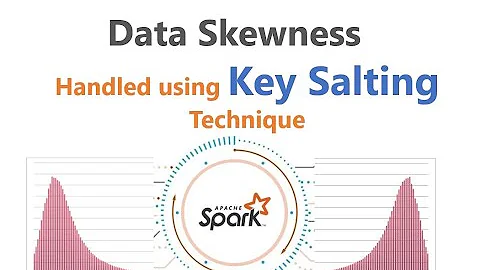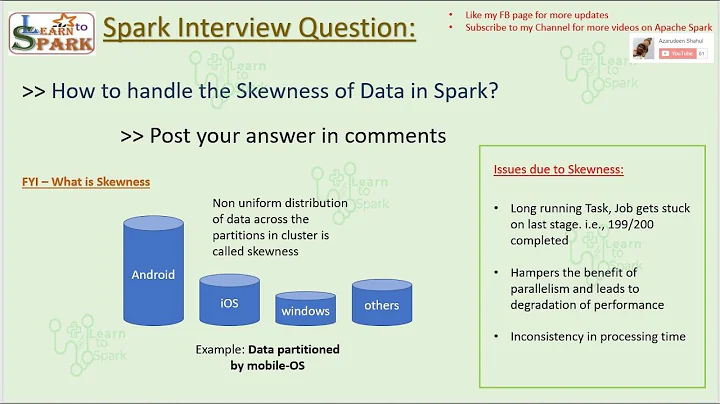spark: How does salting work in dealing with skewed data
Solution 1
My question is when random numbers are appended to the key doesn't it break the group?
Well, it does, to mitigate this you could run group by operation twice. Firstly with salted key, then remove salting and group again. The second grouping will take partially aggregated data, thus significantly reduce skew impact.
E.g.
import org.apache.spark.sql.functions._
df.withColumn("salt", (rand * n).cast(IntegerType))
.groupBy("salt", groupByFields)
.agg(aggFields)
.groupBy(groupByFields)
.agg(aggFields)
Solution 2
var df1 = Seq((1,"a"),(2,"b"),(1,"c"),(1,"x"),(1,"y"),(1,"g"),(1,"k"),(1,"u"),(1,"n")).toDF("ID","NAME")
df1.createOrReplaceTempView("fact")
var df2 = Seq((1,10),(2,30),(3,40)).toDF("ID","SALARY")
df2.createOrReplaceTempView("dim")
val salted_df1 = spark.sql("""select concat(ID, '_', FLOOR(RAND(123456)*19)) as salted_key, NAME from fact """)
salted_df1.createOrReplaceTempView("salted_fact")
val exploded_dim_df = spark.sql(""" select ID, SALARY, explode(array(0,1,2,3,4,5,6,7,8,9,10,11,12,13,14,15,16,17,18,19)) as salted_key from dim""")
//val exploded_dim_df = spark.sql(""" select ID, SALARY, explode(array(0 to 19)) as salted_key from dim""")
exploded_dim_df.createOrReplaceTempView("salted_dim")
val result_df = spark.sql("""select split(fact.salted_key, '_')[0] as ID, dim.SALARY
from salted_fact fact
LEFT JOIN salted_dim dim
ON fact.salted_key = concat(dim.ID, '_', dim.salted_key) """)
display(result_df)
Related videos on Youtube
Bishamon Ten
Updated on May 26, 2022Comments
-
 Bishamon Ten almost 2 years
Bishamon Ten almost 2 yearsI have a skewed data in a table which is then compared with other table that is small. I understood that salting works in case of joins- that is a random number is appended to keys in big table with skew data from a range of random data and the rows in small table with no skew data are duplicated with the same range of random numbers. Hence the matching happens because there will be a hit in one among the duplicate values for particular salted key of skewed able. I also read that salting is helpful while performing groupby. My question is when random numbers are appended to the key doesn't it break the group? If it does then the meaning of group by operation has changed.
-
Shubham Gupta almost 3 yearsif the aggregation functions are like count, percentile and standardDeviation will this produce correct results, I know for sum, it will be efficient this way but not sure for the count, percentile, and standardDev it will provide the correct results.
-
 Jacek Laskowski almost 3 yearsI'd really love to see the whole comparison of the query plans and performances of without- and with-salt computations.
Jacek Laskowski almost 3 yearsI'd really love to see the whole comparison of the query plans and performances of without- and with-salt computations. -
 Sarang over 2 yearswhat if we try to create new column using substring on skewed column?
Sarang over 2 yearswhat if we try to create new column using substring on skewed column?




